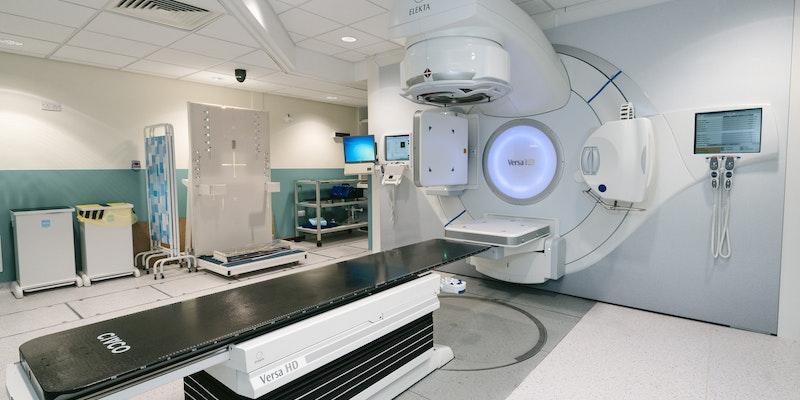
Lung cancer remains a pressing concern in global health. A large percentage of patients are diagnosed early. This cancer, called metastatic when it goes beyond the lungs, is rising globally. America's sixth most prevalent illness is lung cancer. Alarmingly, 20% of cancer deaths there are caused by it. Lung cancer was expected to increase by 14,700 in 2023.
Types of Lung Cancer
Lung cancer can primarily be classified into two categories:
NSCLC (Non-Small Cell Lung Cancer)
NSCLC accounts for approximately 85% of all lung cancer diagnoses.
Within the umbrella of NSCLC, there are various subtypes. The most prevalent subtype is:
- Mucus-producing cells cause this malignancy. Smokers are at risk, although non-smokers are more likely to have adenocarcinoma. This malignancy usually affects the bigger lungs' airways.
- Large-cell undifferentiated carcinomas may occur anywhere in the lungs, unlike adenocarcinomas.
SCLC (Small Cell Lung Cancer)
- As indicated by its name, SCLC predominantly comprises smaller-sized cells.
- Distinct from NSCLC, small-cell lung cancer often originates in the central lobes of the lungs. From there, it quickly spreads to the lung periphery.
- About 15% of lung cancer cases have this variety.
Recognizing and addressing lung cancer's distinct types and implications is imperative, as early diagnosis and treatment can significantly impact outcomes.
Lung Cancer Stages
Lung cancer's progression is typically classified into distinct lung cancer stages, which help guide treatment decisions and predict patient outcomes. The phases depend on tumor size, location, and dissemination. Remember that cancer staging might be more complicated than it seems. For instance, a Stage III cancer might have a smaller tumor than a Stage II cancer. Yet, other factors can make Stage III cancer more severe.
Here's a more detailed breakdown of each stage:
Stage 0 (In-Situ)
At this earliest stage, cancer cells are present only in the top layer of cells lining the air passages and have not invaded deeper tissues.
The cancer hasn't spread beyond the upper layer or reached the surrounding lung tissue or other areas.
Stage I
- The cancer is localized, meaning it is still contained within the lung where it originated.
- It hasn't spread to nearby lymph nodes or distant parts of the body.
Stage II
- At this stage, the tumor is more prominent than in Stage I.
- The cancer might have spread to nearby internal lymph nodes.
- Alternatively, multiple tumors might be present within the same lobe of the lung.
Stage III
- This stage indicates a more advanced state than Stage II.
- The cancer has spread to nearby lymph nodes or neighboring structures within the chest.
- There might be multiple tumors in different lobes of the same lung, highlighting the invasive nature of the cancer at this stage.
Stage IV
- This is the most advanced stage of lung cancer.
- The cancer has spread beyond the original lung, possibly affecting the other lung.
- Surrounding fluid, including the fluid around the heart, might have cancer cells.
- Most worryingly, distant organs and structures outside the chest may also be affected.
Symptoms of Lung Cancer

If you are facing any of these signs and symptoms of lung cancer, you must see a doctor because this is alarming.
- Lung cancer symptoms may include
- trouble breathing and changed voice (hoarseness).
- Painful chest
- Bloody vomiting
- Chronic chest infections
- increased fingertip size
- absence of hunger
- Fatigue and meager body weight.
What Causes Lung Cancer
Here are a few reasons that might increase your risk of catching this deadly cancer.
- Tobacco usage
- Secondhand smoke
- Health issues from asbestos
- Radon gas ingestion
- Toxic workplace pollutants include cadmium, arsenic, nickel, diesel, and exhaust.
- HIV
- Previously diagnosed emphysema or lung fibrosis
- Age-related issues.
Diagnosing Lung Cancer
Different tests are used to detect tumors and define their type and stage in lung cancer. The usual processes are examined in detail here:
Chest Radiograph
- This is an X-ray of the chest.
- Tumors larger than 1 cm in diameter are usually visible in this imaging technique. While it's a standard initial test, smaller growths might not be as easily detected.
Computerized Tomography (CT) Scan
- Advanced CT scans show the body's interior in cross-section.
- They can detect tiny cancers that a normal X-ray cannot and reveal the cancer's link to surrounding lymph nodes and other tissues.
Spirometry
- This lung function test evaluates lung function.
- Healthcare workers can use spirometry to measure air volume and inhaling speed to detect respiratory system issues.
Biopsy
- If X-rays or CT scans suggest problems, a biopsy may be advised.
- A small tissue sample is taken from the suspected area for detailed examination under a microscope during a biopsy.
- The techniques to obtain the biopsy can vary. Some standard methods include:
- Bronchoscopy: A procedure in which a tube is passed down the throat to view the lung's airways and extract tissue samples.
- CT-guided core biopsy: Where imaging from a CT scan is used to guide a needle to the precise location of the suspicious tissue.
- Endobronchial ultrasound: A method that uses ultrasound to visualize and obtain samples from areas of concern in the lungs.
Sputum Cytology
- This test examines lung mucus sputum under a microscope.
- The goal is to identify any abnormal cells that might indicate the presence of cancer.
Treatments for Lung Cancer

After lung cancer diagnosis, it's common to worry about treatment options. Cancer kind, stage, genetics, and patient condition often determine treatment.
Cancer Stage Identification
The cancer stage determines the treatment plan after diagnosis. TNM determines the main tumor's size and metastasis to lymph nodes and other organs. It classifies the tumor's (T) size and extent, surrounding lymph nodes (N), and metastasis (M), which indicates whether the malignancy has spread.
Surgery
Surgery is often the first treatment for early-stage non-small cell lung cancer. Surgery has three primary types:
- Lobectomy: Removing a lobe of the lung which contains the tumor.
- Wedge Resection: Extracting a smaller, wedge-shaped portion of the lung that encompasses the cancer.
- Pneumonectomy: Removing an entire lung when the tumor is extensive.
Radiotherapy
Radiotherapy employs X-rays to target and destroy cancer cells as a standalone treatment or in conjunction with surgery or chemotherapy. This approach is often viable for locally advanced (stage III) non-small cell lung cancer and can be a good option if surgery isn't possible. Radiotherapy might also be used post-surgery to treat any areas where cancer cells remain.
Thermal Ablation
Thermal ablation can be a viable option for patients who cannot undergo surgery or radiation, particularly in the case of locally advanced NSCLC in Stage I. This procedure uses needles to deliver heat directly to the tumor, killing cancer cells.
Chemotherapy
Cancer cells are targeted by chemotherapy, which treats small and non-small cell lung cancers. Before surgery to shrink the tumor, with radiation therapy to boost its efficacy, or after surgery to reduce recurrence.
Immunotherapy
Immunotherapy leverages the body’s immune system to fight cancer cells and is sometimes used to treat non-small cell lung cancers.
Targeted Therapy
This innovative approach involves personalized medicine, wherein therapies are designed to target cancer cells with specific mutations. It's often utilized for advanced non-small cell lung cancer, tailoring treatments to the individual characteristics of a patient's cancer cells to yield better outcomes potentially.
The Prognosis for Patients With Lung Cancer
The term "prognosis" refers to a disease's anticipated course and outcome. No doctor can anticipate the progression of an illness, but they can provide insights based on average outcomes for similar cancer kinds and lung cancer stages. When evaluating a prognosis, your doctor will evaluate your test findings, lung cancer type, tumor growth rate, tumor extent, age, health, and smoking history. Early cancer detection improves treatment.



